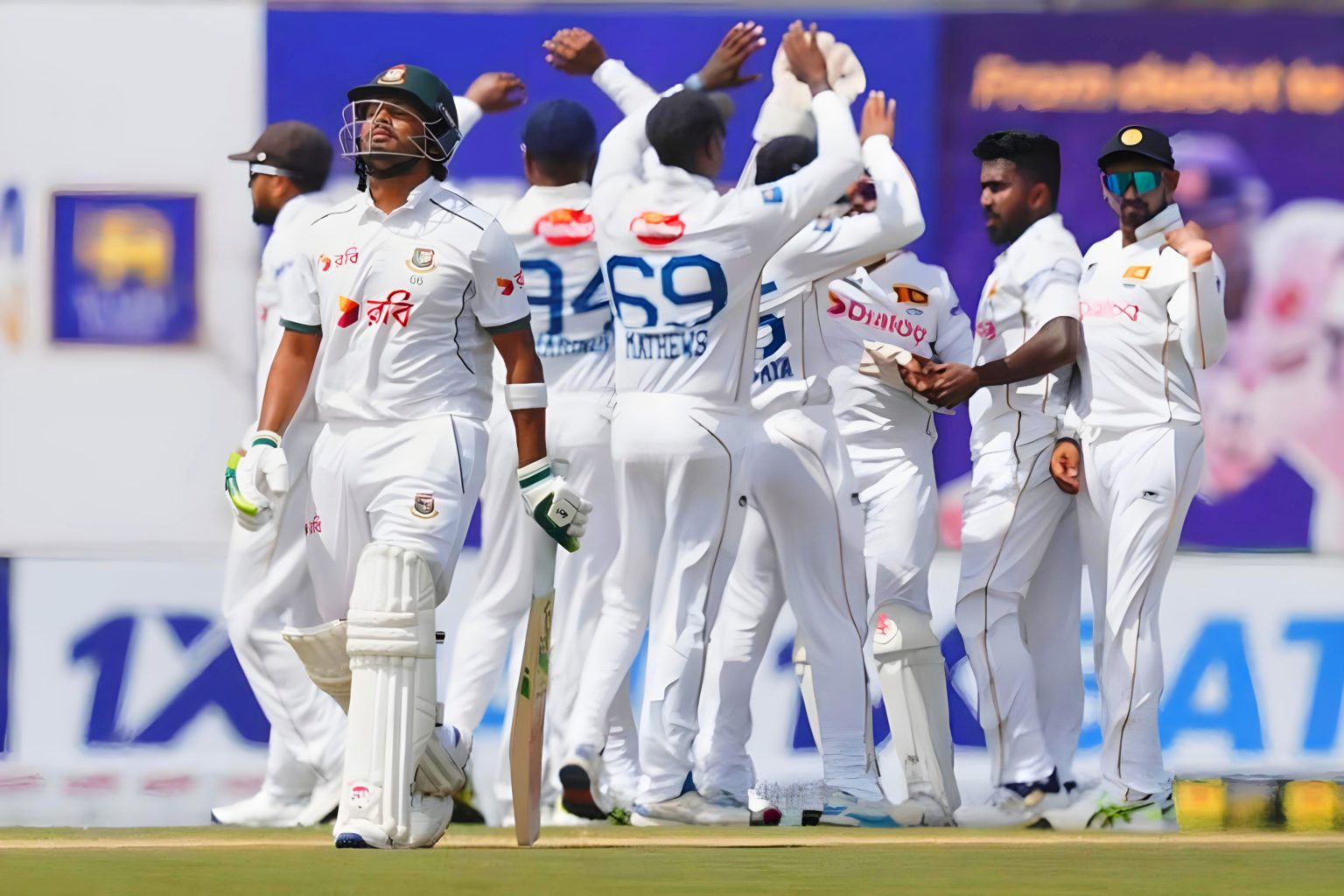In the first Test the pitch was a paradise. Galle offered everything for batters — sunshine, even bounce, and a Sri Lankan bowling attack running out of venom. Most found comfort. Some found centuries. But for Anamul Haque Bijoy, it was just another chapter of silence.
The same scenario repeats in Colombo too. Ten balls, zero runs, and a walk back with shoulders slumped and eyes distant. It wasn’t just a duck. It was a mirror — one that reflected a career stuck between domestic dominance and international oblivion.
The scene feels too familiar. It’s 2025, a full twelve years since Bijoy made his Test debut. And yet, in 14 innings, he still searches for a half-century. His highest score remains an uninspiring 39. It’s not just an absence of milestones — it’s the absence of momentum, presence, or promise.
In Colombo’s first innings, Bijoy edged one onto his stumps from Asitha Fernando. It was the kind of delivery openers are expected to negotiate — not fall prey to. What made it worse was the lifeline he had received just a ball earlier: a drop behind the stumps, a reprieve from fate. But he failed to make it count. One might remember Harry Brook surviving a chance on zero and turning it into a 99. Bijoy? Not even a single run.
His numbers don’t lie, but they hardly tell the full tragedy. Domestic cricket treats him like royalty. Hundreds flow from his bat like poetry in motion — graceful, confident, commanding. But bring him under the lights of the international arena, and the script always falters.
The contrast is too stark to ignore. The same bat that crafts centuries in Khulna or Chattogram stutters in Galle and Colombo. Why? Because Test cricket doesn’t ask for form alone — it demands intent, clarity, and self-awareness.
In Colombo, where the openers were supposed to lay a foundation, Bijoy looked like a man unsure of his own technique. Against the swinging ball, his defence lacked conviction. His footwork hesitated, his bat followed late. Yet, what haunts more than his technique is his refusal to adapt.
Over the years, cricket has seen technically flawed players succeed through clarity and intent. If you can’t survive with defence, attack your way to runs. But Bijoy, for all his experience, neither defends with authority nor attacks with conviction. He often hangs in the middle — the most dangerous place in Test cricket.
One would expect that a player who captains domestic teams, who has played the role of senior statesman in Bangladesh’s first-class circuit, would understand his own game. But Bijoy still bats like someone chasing a style rather than owning a method.
His failures cannot simply be blamed on pressure or unfamiliarity. He has been given time. He has been offered opportunities many others only dream of. And in return? Fourteen innings with scores of 13, 1, 3, 18, 7, 22, 9, 0, 23, 4, 39, 0, 4, and 0. Three ducks. No half-centuries. A Test average now sliding under 10.
This match in Colombo might well be the end of his Test career. And if it is, the timing would be justified. Bangladesh no longer has the luxury to wait on potential that doesn’t fire. The likes of Soumya Sarkar — flawed, yes — can at least counterattack and shift pressure. In recent years, even Soumya’s red-ball numbers have looked promising.
It’s not just about Bijoy’s struggles. It’s about what he offers to the team dynamic. When you send a batter out with a low ceiling of contribution, you risk wasting the most valuable resource in Test cricket: time.
Bijoy plays like a man stuck in thought, as if every ball is a new question he’s trying to solve from scratch. But in Test cricket, you must know the answer before you walk out. And if your strength lies in shot-making, you must use it. You cannot protect your wicket with confused half-defensive pokes — not against international-grade bowlers who wait patiently for the edge.
The narrative now is no longer about missed opportunities — it’s about a chapter that never really started. Bijoy had every tool to succeed. He had years of first-class cricket, leadership experience, and multiple recalls. But the inability to adapt, to commit to a method, has written a story full of blanks.
Unless something extraordinary happens in the second innings — a fluent fifty, a statement of resistance — this might be the last we see of Anamul Haque Bijoy in Bangladesh’s Test whites. And maybe that’s how it should be. For the sake of the team, and for the dignity of a player who gave his best but couldn’t bridge the great divide between promise and performance.


